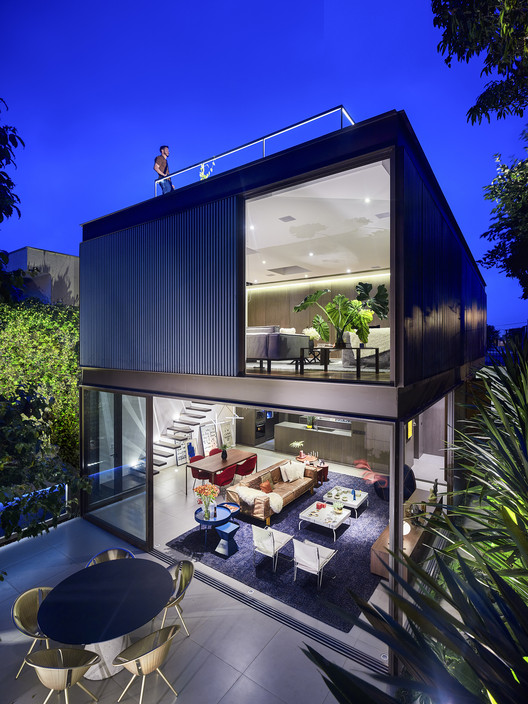.jpg?1548249340)
Sao Paolo: The Latest Architecture and News
C+C House / Studio MK27 - Marcio Kogan + Samanta Cafardo
Ecumenical Center / Carolina Maluhy

-
Architects: Carolina Maluhy
- Year: 2017
-
Manufacturers: Coral, Deca, Marcenaria Paulinho, Padrão Móveis
The First Complete Street in Sao Paulo has a 92% Approval Rating

The implementation of a Complete Street is something to be celebrated. A Complete Street initiative is a clear indication that a city is striving for urban mobility and seeking a more democratic and safer use of space. Nevertheless, it is vital to measure the impact of these interventions when implementing future actions.
Joel Carlos Borges Street, the first Complete Street in São Paulo, underwent an evaluation two months after it was completed. The study revealed that 92% of its users approved of the project and believed that the changes were beneficial.
Warde Office / Studio AG Arquitetura

-
Architects: Studio AG Arquitetura
- Area: 300 m²
- Year: 2018
-
Manufacturers: Atec, Claudia Moreira Salles, Colormix, Decameron, Dix Arte e Metal, +5
Box House / Flavio Castro
Library / Pascali Semerdjian Arquitetos

-
Architects: Pascali Semerdjian Arquitetos
- Area: 645 ft²
- Year: 2018
-
Manufacturers: Exito Mais, Galeria della Pietra, La Lampe, Star Inox, Vidrio Queiroz
Safdie Architects and Perkins+Will's Albert Einstein Medical School Breaks Ground in São Paulo
.jpg?1541592816)
The first Brazilian project by Safdie Architects has broken ground in Sao Paolo's Morumbi neighborhood on November 6. Developed in partnership with Perkins+Will, The Albert Einstein Education and Research Center is part of the Albert Einstein hospital complex.
The new center, named Campus Cecilia and Abram Szajman, will be one of the most advanced institutions in Latin America for medical studies. It will feature innovations in learning methods and technologies, as well as flexible research laboratories capable of adapting to the advancement of hospital techniques.
Which Cities Have the Most High-Rises?

The downtown skyline of a city is perhaps its most symbolic feature. The iconic cityscapes that we know and love are typically formed by skyscrapers, but much of the surrounding context is made up of other high-rise buildings. Yes, there is a difference between a skyscraper and a high-rise. Research company Emporis defines a high-rise as a building at least 35 meters (115 feet) or 12 stories tall. These high-rise buildings play a major role in the more sprawled urban context of larger cities today.
Read on for Emporis' list of the 20 cities in the world with the most high-rises. You might be surprised by which cities made the cut.
What Makes a City Livable to You?

Mercer released their annual list of the Most Livable Cities in the World last month. The list ranks 231 cities based on factors such as crime rates, sanitation, education and health standards, with Vienna at #1 and Baghdad at #231. There’s always some furor over the results, as there ought to be when a city we love does not make the top 20, or when we see a city rank highly but remember that one time we visited and couldn’t wait to leave.
To be clear, Mercer is a global HR consultancy, and their rankings are meant to serve the multinational corporations that are their clients. The list helps with relocation packages and remuneration for their employees. But a company’s first choice on where to send their workers is not always the same place you’d choose to send yourself to.
And these rankings, calculated as they are, also vary depending on who’s calculating. Monocle publishes their own list, as does The Economist, so the editors at ArchDaily decided to throw our hat in as well. Here we discuss what we think makes cities livable, and what we’d hope to see more of in the future.


.jpg?1548250668)
.jpg?1548250696)
.jpg?1548249391)
.jpg?1548251417)




















